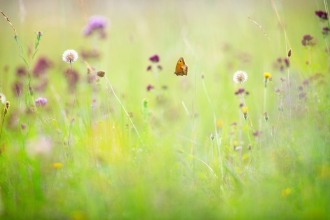Butterflies are vibrant, eye-catching additions to our gardens which conjure up images of sunshine, and the warmth and colour of flowery meadows.
Britain has 59 species of butterfly and more than 2,500 types of moth. They are important pollinators and, along with caterpillars, are vital food for birds like robins and blue tits as well as bats. You may see garden birds taking caterpillars to feed their young in the spring and summer. It can take up to 10,000 caterpillars to rear a brood of blue tits!
Butterflies are good environmental indicators, so if their populations are going up or down we get a good sense of how well the rest of the environment is doing.
Unfortunately, their habitats have faced catastrophic declines and once-common species like the small tortoiseshell have dropped by up to 80% in the last 30 years in some areas.
The good news is that we can help butterflies and moths through gardening.




